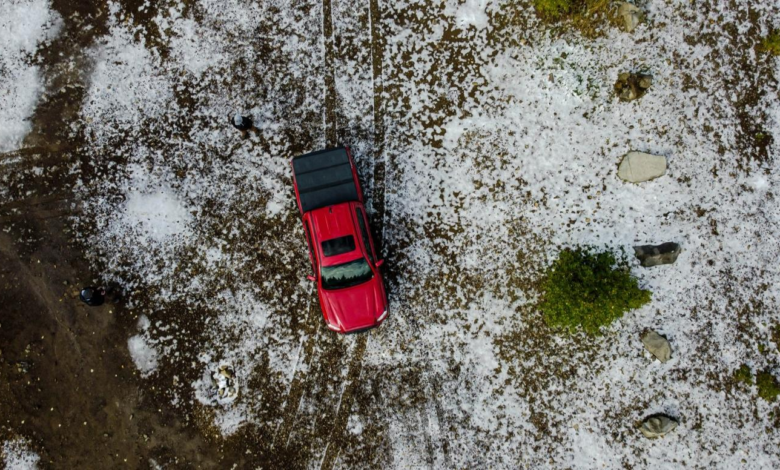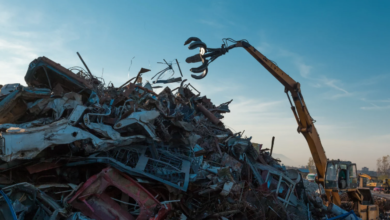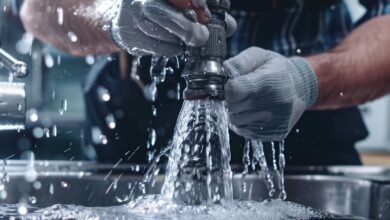What to Do After Your Car Gets Hit by Hail

Unexpected hail can strike with little warning and leave your vehicle exposed to severe and sometimes costly damage. Perhaps that has already happened to you.
Whether you are dealing with minor cosmetic dents or more serious structural harm, it is important to know what to do immediately after a hailstorm. This is because it can significantly impact your repair costs, insurance outcome, and long-term vehicle value.
So, without further ado, let’s outline some practical, informed steps to take when your car has been hit by hail, ranging from documentation and smart decisions to timely action.
1. Begin with a Complete Damage Assessment
Once the storm has passed and it is safe to go outside, inspect your vehicle thoroughly. Do not rush this step. Look at the roof, hood, trunk, and all side panels, and use natural light when possible to catch subtle indentations. Many hail dents are not visible unless viewed from certain angles.
At this time, it is up to you to document everything. Take wide shots of the entire vehicle, followed by close-up images of specific damage areas, and make sure these photos are timestamped.
While these visuals may not substitute for an in-person inspection, they form a useful record for insurance and repair professionals.
2. Explore Your Local Options
If you live in a hail-prone region such as Texas, it is helpful to be aware of the repair options available nearby. According to NOAA, Texas experienced more hail events than any other state in 2021, with over 688 reported instances. In some neighborhoods, residents filed dozens of claims in a single afternoon.
This is why having a plan in place before a storm strikes can reduce delays and simplify the recovery process.
The best part is that there is a wide range of service centers that cater to hail repair in San Antonio, offering mobile inspections and prioritizing quick turnaround times due to the high volume of claims following major storms.
Understanding the typical repair process, which includes cost ranges and whether technicians specialize in paintless dent repair or conventional methods, can help you make informed decisions.
3. Contact Your Insurance Provider Immediately
Numerous comprehensive auto insurance policies cover hail damage, but timelines for filing vary. Some providers require notification within 30 to 60 days of the incident, while others offer more flexibility.
Check your policy and file as soon as possible. The longer you wait, the more likely your claim could be contested or denied.
Provide your insurer with detailed documentation: photographs, a timeline of the storm, and a written description of the damage. Some insurers use remote appraisal tools or even AI-based software to process claims faster. While efficient, these tools can sometimes undervalue damage, especially in low-contrast lighting or when dents are shallow.
It is helpful to know that hail-related repairs cost approximately 21.7% more than standard comprehensive claims and are among the most expensive non-collision repairs covered by insurance. At the end of the day, understanding these dynamics can help when negotiating a fair settlement.
4. Ask Whether Paintless Dent Repair (PDR) Is Viable
PDR is the preferred method for repairing hail damage when the paint surface is not compromised. It is less invasive, retains the factory finish, and typically costs less than conventional repairs.
However, PDR may not be suitable in all scenarios. Severe hail can result in sharp creases, chipped paint, or metal distortion, especially on roofs or hoods. Aluminum panels, which are common in modern vehicles, are also harder to restore with PDR.
Be sure to confirm with your technician whether your vehicle is a candidate for this method. If traditional repair is required, you may need to plan for extended repair times and higher costs.
5. Consider Long-Term Value
Even after cosmetic repairs, vehicles that sustain significant hail damage may depreciate faster than their undamaged counterparts. This phenomenon, known as “diminished value,” can reduce a car’s market price.
Carfax and similar reporting services often flag hail damage in vehicle history reports. Buyers may interpret this as a red flag, regardless of repair quality. If resale is part of your long-term plan, consider requesting a diminished value claim from your insurer or having a third-party appraiser document the loss for future reference.
Beyond resale, there are structural concerns. Delayed repairs can lead to moisture intrusion, rust, and weakened panels. These problems are not always visible at first, but they can compound over time and ultimately affect drivability or safety.
6. Ask About Rental Vehicles and Insurance Coverage During Repairs
Some policies include rental reimbursement during the repair period. If your car requires extensive work, having a rental vehicle covered can reduce logistical stress. Be sure to verify whether your insurer requires you to use a specific rental agency or if reimbursement is offered for any provider.
In high-incident areas, rental fleets can become quickly saturated following a major hailstorm. This is why it is important to make an early reservation, even before receiving your repair estimate, which can help secure a vehicle when demand surges.
7. Secure Temporary Protection if Immediate Repairs Are Delayed
In case your repair appointment is scheduled days or weeks out, take interim precautions. These include covering broken windows or glass with plastic to prevent rain damage and storing the vehicle in a garage or under cover when possible to prevent further exposure.
If you live in a region where hailstorms occur often, then you are already aware that they tend to appear in clusters. On this note, multiple events within a season can magnify damage and complicate insurance claims. Protecting your vehicle during this waiting period may prevent secondary damage that could fall outside your current claim.
8. Keep Records for the Future
After repairs are complete, ask for documentation showing exactly what was done to your vehicle. This includes invoices, part replacements, and the repair method used. It is wise to retain these documents for insurance purposes, resale, or any future disputes.
Some repair facilities offer warranties on PDR or bodywork. Ask for this in writing, and a reputable technician will not hesitate to back their work, particularly if it was paid through insurance.
Conclusion
Dealing with hail damage is frustrating, but following a clear, informed process can significantly reduce stress and financial impact.
By acting quickly and relying on accurate information, you position yourself for the best possible outcome. Whether you are navigating repairs for the first time or revisiting familiar territory, the most important thing is to approach the situation with a clear mind and well-informed plan.







